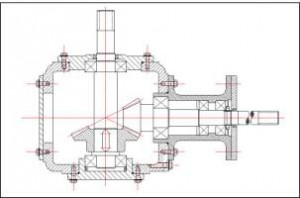Improvements eyed for Birds Hill bike trail
BIRDS HILL PARK Over the course of 63 extremely active years, Lindsay Gauld has cycled more than 953,000 kilometres, a distance equal to a trip to the moon and back and halfway up again.
A fixture in the Winnipeg cycling community, Gauld is best known as the former Olympian athlete who ran a bike shop named after the games for 24 years. After he sold Olympia Cycle and Ski, he took up a part time job as a bike courier, continued to organize bike races and kept piling on the personal clicks.
If he remains healthy and avoids another trip to the emergency ward he’s fractured his collarbone more times than most people have had cavities filled he’ll probably reach the million kilometre milestone some time in 2013.
So it’s somewhat surprising to see Gauld focused on a much more modest goal: expanding a 7.5 kilometre mountain bike trail at Birds Hill Park by another five kilometres.
Nine years ago, Gauld and other members of Winnipeg’s Olympia Cycling Club started cutting a mountain bike trail in the southwest corner of Birds Hill Park, around the Bur Oak walking trail.
They had already started cutting mountain bike trails in the northeast side of the heavily developed park. But Manitoba Conservation was concerned about the proximity of bikes to equestrian trails, as horses can get spooked by people on bikes.
So the mountain bike crew turned to the park’s opposite corner,
cards against humaity?, one of the less developed places in a park that’s already one of the most heavily used in the provincial system.
The volunteer built Bur Oak mountain bike trail now meanders around the perimeter of the walking trail of the same name, rolling up and down a gentle slope in the sandy, post glacial landscape.
None of the trail is overly technical, as Gauld who designed the more challenging Pan Am Games course at the Birch Ski Area intended this track to be family friendly as well as serve as a mountain bike racing circuit.
Berms are in place to enable easy turns and the surface is packed densely enough to be easy to ride when wet. Last Saturday, which was as soggy as May gets, the track was easier to ride than asphalt, except in sections with exposed tree roots.
Birds Hill Park has officially sanctioned the trail, which appears on official park maps as well as on the Manitoba Conservation website. The only thing missing right now is the signage that will encourage more cyclists to use the trail.
In the long term, Gauld hopes to expand the trail by five more kilometres and develop a 1.5 kilometre racing loop for kids.
Every move,
cards against humanitu, however, must approved by conservation staff. This is not a situation unique to Birds Hill Park. All across Canada, provincial and national parks are working with volunteer trail building organizations in an effort to add more amenities without creating additional pressure on park budgets.
On one hand, parks need to cater to more people to remain relevant. And that means adding more trails and campsites, both in the easily accessible front country and in the back country.
On the other hand, the wrong sorts of new developments could hamper the experiences parks already offer. There are purists who believe there are already too many people visiting some of Canada’s more popular parks.
And when parks work with outside organizations, the relationships create thorny issues such as legal liability and long term maintenance. In the case of the Bur Oak mountain bike trail, it’s not clear whose job it will be, in the long term, to repair eroded sections of the trail when they arise.
Given its popularity and proximity to Winnipeg, Birds Hill Park is already at the point where it can’t really handle many more visitors or create new amenities. The park is already home to two campgrounds, the Winnipeg Folk Festival site,
against humanity card game, an artificial lake and a trail network that crosses almost every hectare within its boundaries.
Additional development is obviously going to be modest. Birds Hill Park could follow the American state park practice of creating a handful of walk in campsites as an adjunct to the existing campgrounds.
These more secluded sites, which require campers to hike a short distance with their gear, afford more of a natural experience in parks too small to offer back country camping.
In the meantime, it’s probably realistic to expect a few more kilometres of mountain bike track, provided Lindsay Gauld keeps his collarbone intact and doesn’t get tired of building trails.
About Bartley Kives
Bartley Kives wants you to know his last name rhymes with Beavis, as in Beavis and Butthead. He aspires to match the wit, grace and intelligence of the 1990s cartoon series.
Bartley joined the Free Press in 1998 as a music critic. He spent the ensuing 7.5 years interviewing the likes of Neil Young and David Bowie and trying to stay out of trouble at the Winnipeg Folk Festival before deciding it was far more exciting to sit through zoning variance appeals at city hall.
In 2006, Bartley followed Winnipeg Mayor Sam Katz from the music business into civic politics. He spent seven years covering city hall from a windowless basement office.
He is now reporter at large for the Free Press and also writes an outdoor recreation column called Offroad for the Outdoors page.
A canoeist, backpacker and food geek,
card against humanity, Bartley is fond of conventional and wilderness travel.
Bartley appears every second Wednesday on CityTV Breakfast Television. His work has also appeared on CBC Radio and in publications such as National Geographic Traveler, explore magazine and Western Living.
Born in Winnipeg, he has an arts degree from the University of Winnipeg and a master degree in journalism from Ottawa Carleton University. He is the proud owner of a blender.

